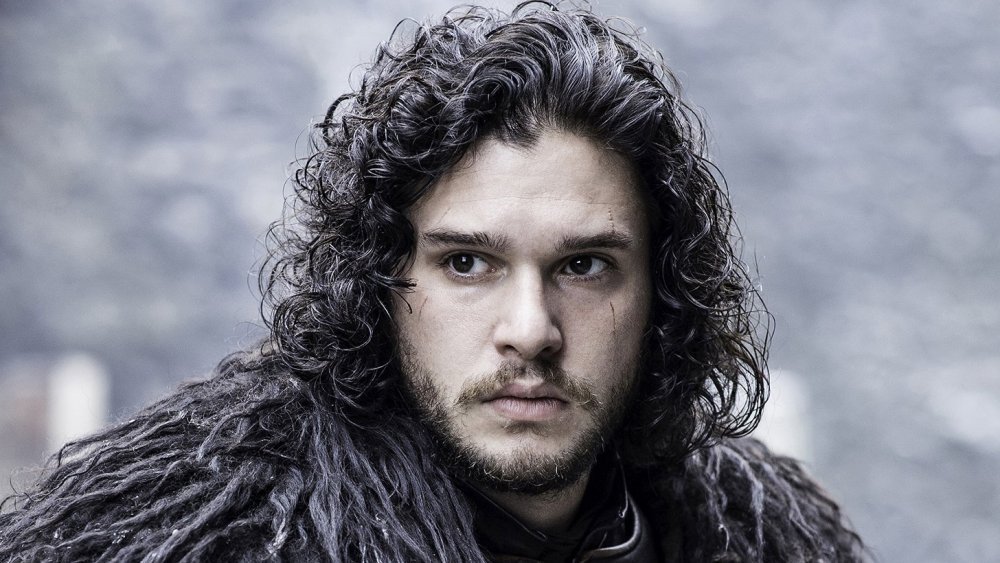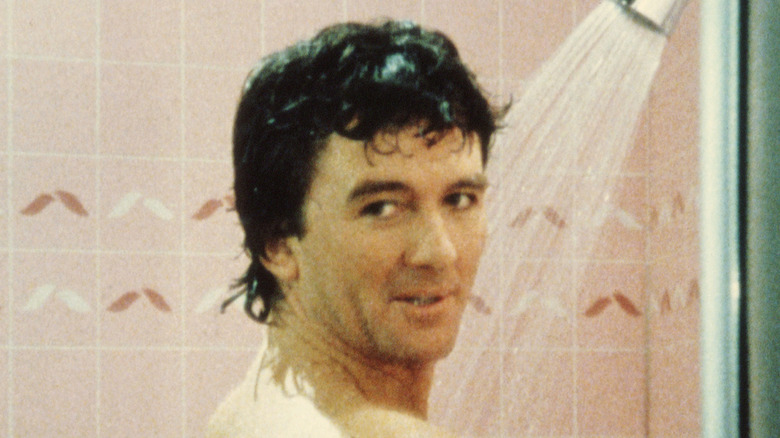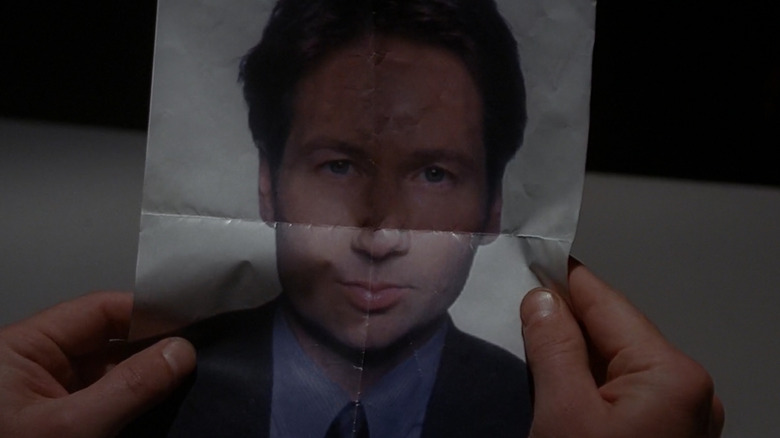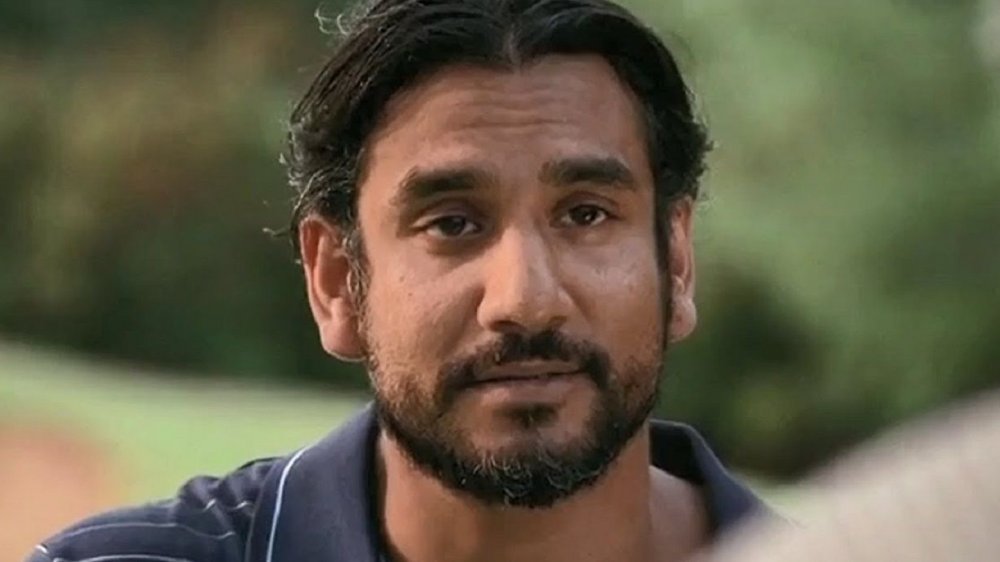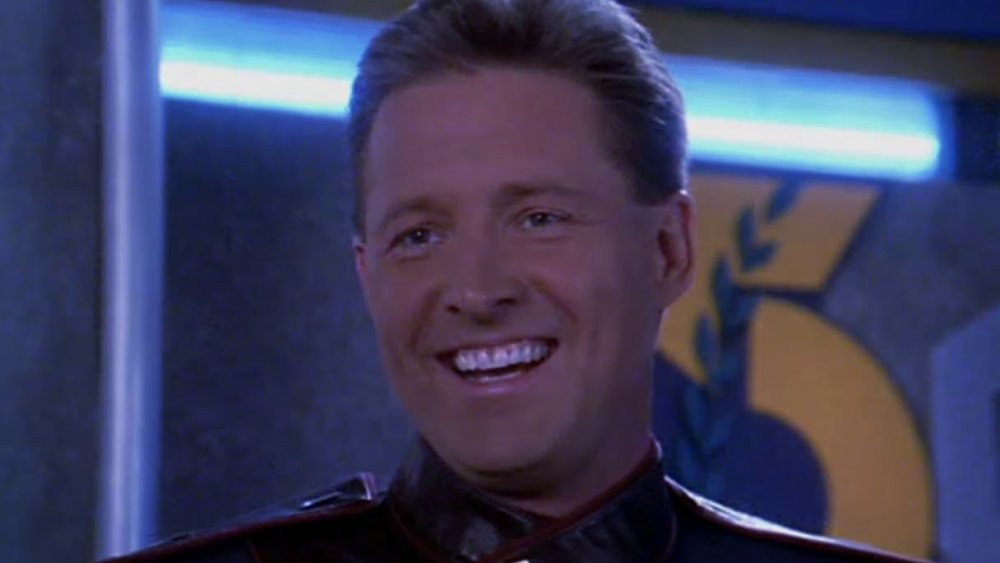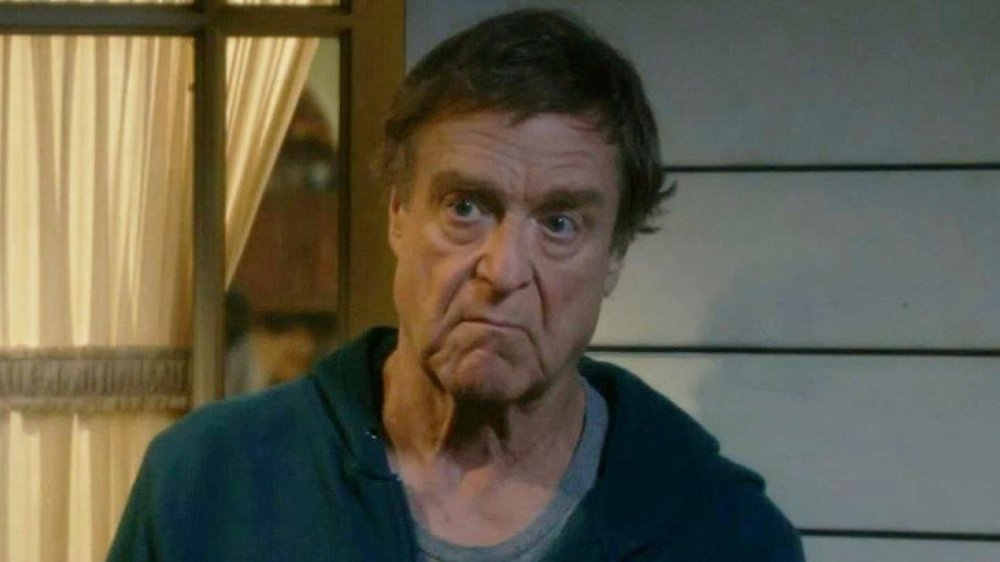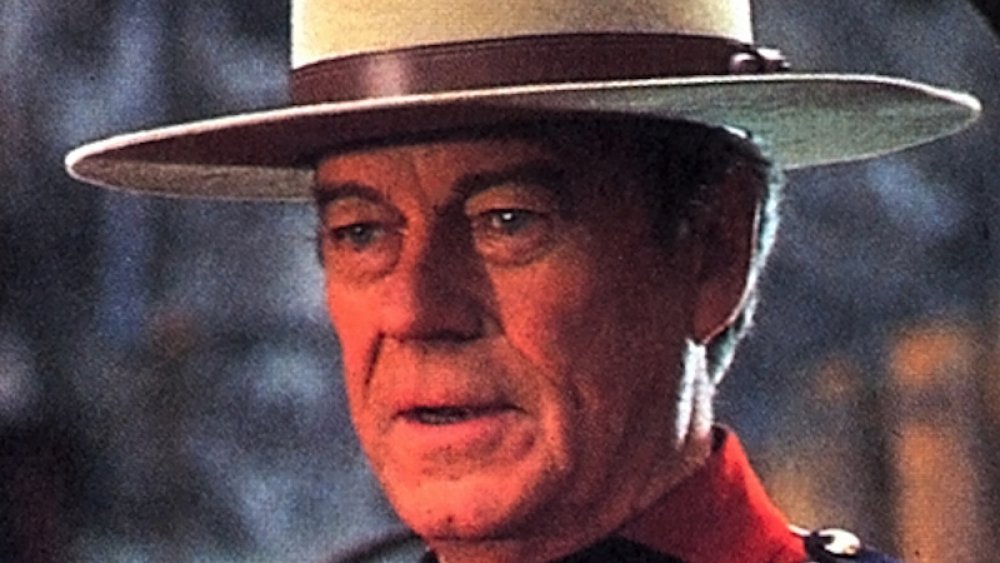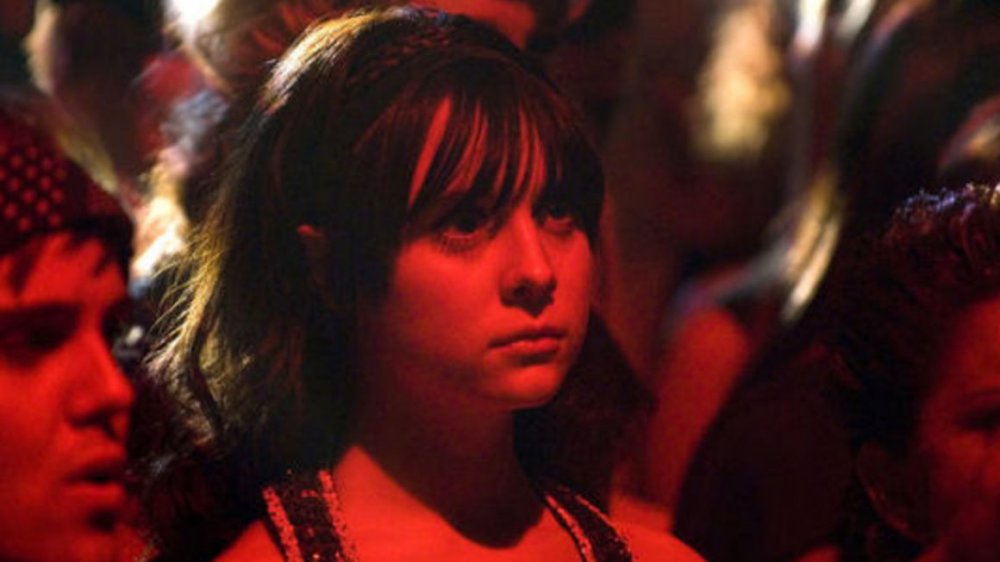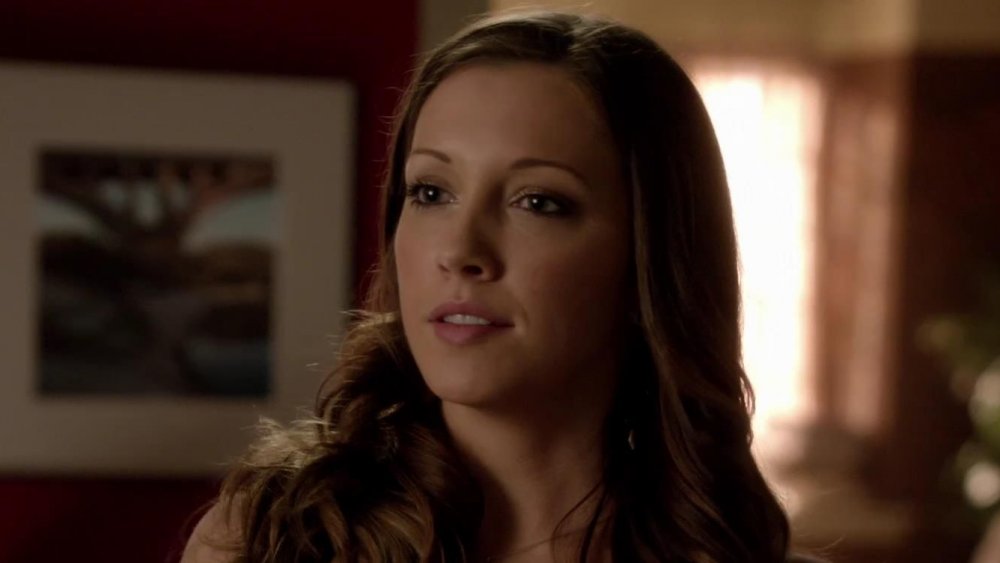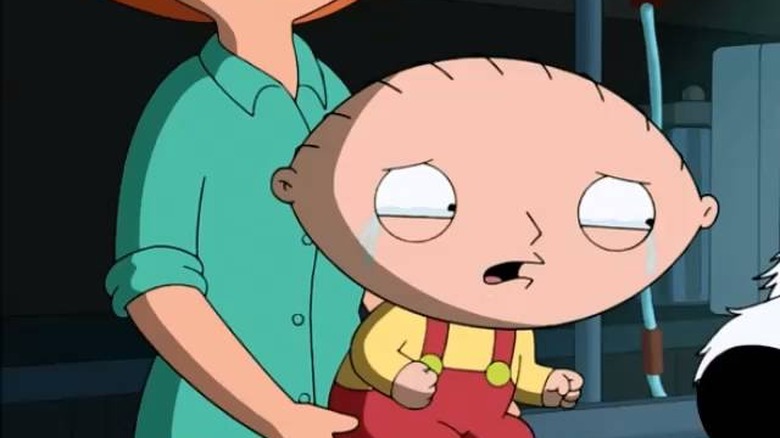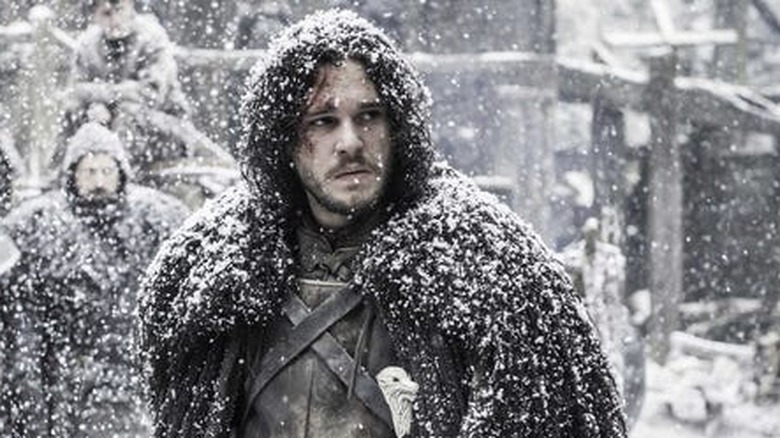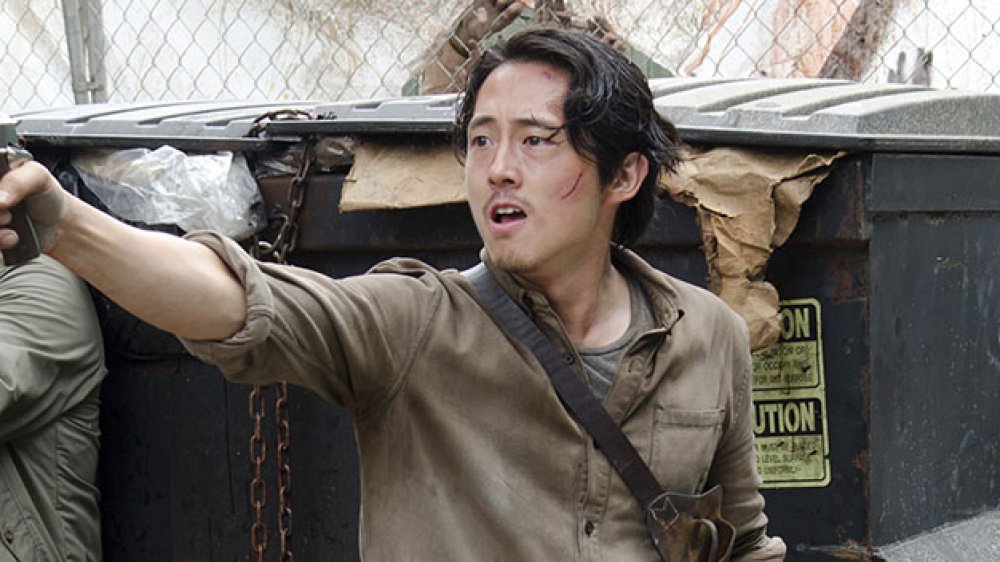Ridiculous Ways TV Characters Were Killed Off And Brought Back
Death is a fate that awaits all real-life human beings, as well as many fictional ones from television. After all, killing off a main character is a dramatic way to propel a plot forward, and it also demonstrates that in the world of the show, anything can happen and that the stakes are very high. In fact, some of the most memorable and indelible moments in television involve the sudden, unexpected death of a character.
But while it's shocking to kill off a character, it's much more shocking to bring them back, not to mention creatively difficult. It's a challenge for even the most experienced TV writers to come up with a legitimate and plausible way for someone to do what's literally impossible and cheat death. Often, these writers don't quite succeed, and the way they get a deceased character back into the swing of things is so far-fetched that it hurts the credibility and quality of the series. From awful fake-outs to time-travel shenanigans, here are some ridiculous ways TV characters were killed off and brought back.
(Major spoilers below.)
Dallas got caught dreaming
There were lots of reasons why Dallas was among the most-watched TV series of the late '70s and early '80s. Similar to other nighttime soaps like Falcon Crest and Dynasty, it offered the fun of rich people behaving like brats, particularly the gleefully wicked oil tycoon J.R. Ewing (Larry Hagman). But plenty of fans tuned in to ogle mega-hunk of the era Patrick Duffy, who portrayed Bobby Ewing, just about the only decent and kind person on Dallas.
It was positively heartbreaking then, in a 1985 episode, when Bobby died after heroically saving a life ... because Duffy wanted out of the show. "I left because I had done the show for seven years. My contract was for seven years," he told The Huffington Post. "I thought if it was ever a time at the height of the popularity of that show, that I might be able to launch into something that was more of a single, starring venue, that that would be the time to do it."
That "starring venue" didn't happen, so after about a year, Duffy acquiesced to Dallas producers' request to return to the series, and the writers resorted to one of the worst cliches in narrative fiction. In a May 1986 episode, Bobby's widow, Pam (Victoria Principal), awakens to the sound of a shower. She goes into the bathroom, and there's Bobby showering. The entire Bobby-free year of Dallas? It was all just a dream.
File this X-Files plot under 'Z' for Zombie Mulder
While Agents Fox Mulder (David Duchovny) and Dana Scully (Gillian Anderson) dutifully investigated different paranormal mysteries week to week on The X-Files, a vast conspiracy involving aliens and high-ranking government officials lorded over the show. While Scully remained skeptical of it all at first, Mulder never stopped believing that the truth was out there. Both undeniably became believers at the end of the show's seventh season, when Mulder was pulled up by a beam of light into a UFO, then whisked away into space by the aliens on board.
Assumed dead, or at least gone forever to whereabouts unknown, Scully discovers Mulder in the woods in the eighth season episode "This Is Not Happening." Several other abductees also return to Earth, although critically wounded — but not Mulder, who seems to be straight-up dead. The following episode, "Deadalive" takes place three months after Mulder's funeral. The increasingly villainous FBI agent Alex Krycek (Nicholas Lea) reveals that he has a vaccine that will save Mulder's life, reversing the alien virus that's actually left him in a near-death state. Forced to act on behalf of conspiratorial forces, FBI Director Skinner (Mitch Pileggi) removes Mulder from life support, but that actually saves him and helps reverse the alien virus. Before long, Mulder is up and solving mysteries again.
Sayid came back from the dead with a magical swim
The whole idea of Lost is that weird and wacky stuff happens on the island where a plane crashed and left a bunch of people for dead (or somewhere between life and death). Lost had a secret hatch related to long-ago activities of an organization called DHARMA, a character called the Smoke Monster, and some wild ideas about time travel, but surely the manner in which one of the main characters conquered death is the oddest and most unlikely thing to ever happen on the show.
In the sixth season, Sayid Jarrah (Naveen Andrews), a member of the Iraqi National Guard turned Oceanic Six survivor, finds himself back in the year 1977, thanks to some of that old island weirdness. The DHARMA Initiative takes him prisoner, but he escapes and tries to kill the young version of Lost character Ben Linus, only to be shot by the boy's father, Roger. Sayid, mortally wounded, then finds his way back to the present-day island, to a pool of funny water at the Temple, an important place for the rival camp known as the Others.
Too bad he dies before anyone can help him, right? Well, Sayid is held under that strange pool, and while it doesn't seem to do the trick at first, eventually the healing waters administered by mysterious forces bring Sayid back to life. Of course, he's more than a little evil now, so yeah, you win some, you lose some.
This Babylon 5 character survived on borrowed time
Bolstered by the popularity of Star Trek: The Next Generation, TV was awash in space shows in the 1990s, chief among them Babylon 5. Affable actor Bruce Boxleitner (Scarecrow and Mrs. King, Tron) joined the cast in season two as Captain John Sheridan, head of the entire Babylon 5 operation during its ongoing war with an ancient race called the Shadows. At the end of season three, the Shadows attempt to get Sheridan to join them. He escapes their clutches on the planet Z'ha'dum and orders a giant ship to crash into its capital city with the force of a nuclear explosion. In the chaos, Sheridan jumps into a pit so deep that a dive into it has roughly the same survival rate as that of a nuclear-level event. In other words, Sheridan was dead.
But when season four kicks off, Sheridan shows up, having somehow survived both the explosion and the jump, but he's caught in a purgatorial state between that of the absolutely living and the absolutely dead. Lorien (Wayne Alexander), the oldest known being on space, encourages Sheridan to cross over to the other side, but the captain refuses, wishing to return to his Babylon 5 crew. Lorien assists by giving him some of his infinite life preserves, which brings Sheridan back to life but only for a maximum of 20 years. When he returns to life and work, an ambassador proclaims, "Captain Sheridan! We thought you were dead." The captain's understated if accurate response? "I was. I'm better now."
Roseanne ignored its own preposterous plot twist
For eight seasons, Roseanne was an acclaimed sitcom about the Conners, a Midwestern family that faced labor instability and money problems. That kind of situation was extremely rare on TV, and the relatable show became incredibly popular and made a star out of John Goodman, who played supportive, hard-working Dan Conner, husband to Roseanne (portrayed by comedian Roseanne Barr). In the show's ninth and final season (1996–97), Roseanne became a completely different show. The Conners won the lottery, and out went the stories of regular life struggles and in came ones with the newly rich Conners acting like fools and engaging in baffling adventures, like fighting off terrorists on a train.
But the weirdest event of all occurred in the series finale. Roseanne reveals that the entire lottery season hadn't actually happened, and that it was all part of a book she'd been writing to deal with personal disappointments and tragedies — like how Dan had died of a heart attack.
Then ABC ordered a revival of Roseanne to air in the spring of 2018, with Goodman in the cast. How would the show explain all of Roseanne's revelations, particularly Dan's death? They made a joke about it and then moved on. The first episode of the revival, Roseanne screams off-camera, "Dan!" The scene cuts to the couple in bed, where Dan awakens. "I thought you were dead! Roseanne yells. "I'm sleeping," Dan explains. "Why does everybody always think I'm dead?"
Due South ghosted its viewers
Due South was always a quirky show. Airing from 1994 to 1999, the crime procedural about Royal Canadian Mounted Police officers took place largely in Chicago. Usually a straightforward series about street-smart Italian-American detective Raymond Vecchio (David Marciano) and his partner, straight-laced Constable Benton Fraser (Paul Gross), the first season spent a lot of time on solving the murder of Fraser's father, Sgt. Robert Fraser, himself an RCMP officer and a legendary one at that.
Bob Fraser dies in the pilot, but the character — and actor Gordon Pinsent — stuck around for most of the four-year run of Due South. How? He took the form of a ghost. Yep, this otherwise realistic, lightly dramatic procedural had a character who was a spirit. The rules of how the policeman ghost could interact with humans evolved over time. At first, only Benton could see him, but then he could manifest to whoever he liked, such as his daughter and his best friend, Sgt. Buck Frobisher (Leslie Nielsen). On occasion, he'd use his powers to spook the bad guys and those responsible for his death. So yeah, it's pretty silly ... but kinda awesome at the same time.
Caprica took a technological route to revive this character
Beginning its life as a campy, '70s television knockoff of Star Wars, Battlestar Galactica returned in 2004 as a thoughtful sci-fi epic that questioned what it even means to be human in the wake of an uprising of powerful man-made androids called Cylons. Those events were explored in the prequel spinoff, Caprica, set six decades before the events of Battlestar Galactica. Zoe Graystone (Alessandra Torresani), the unruly teen daughter of computer engineer Dr. Daniel Graystone (Eric Stoltz), tries to head to the planet Gemenon to follow the monotheistic Soldiers of the One cult, defiant to the polytheistic state religion of the planet Caprica. But in a transport vessel, Zoe's boyfriend reveals himself to be a bomber and kills a number of passengers, including Zoe.
Dr. Graystone can't handle the death of his daughter, and fortuitously, he finds a digital avatar of Zoe — a sentient, lifelike one at that — that she left behind in a virtual reality nightclub. With the aid of some stolen tech, Graystone creates a Cylon prototype and tries to upload Zoe's consciousness into it. He thinks he fails, but he didn't. The rest of the one-season show tracks the actions of the adventures of the first Cylons, Zoe-A and Zoe-R.
For Arrow, it was the right character from the wrong Earth
Several shows on the CW's primetime schedule are part of the intricately intertwined "Arrowverse." Among these series are The Flash, Supergirl, Legends of Tomorrow, and of course, Arrow. All are based on properties from comics publisher DC, and the shows, like the comic books, make liberal use of alternate and multiple realities. That means anything is possible, and death isn't ever really the end, even for a character who kicks the superhero bucket.
Katie Cassidy was an original cast member of Arrow, portraying superhero Black Canary (or in her regular life, Laurel Lance), a role she reprised on The Flash and Legends of Tomorrow. As she was a major figure in the show, her death in the 2016 Arrow episode "Eleven-Fifty-Nine" was especially heartbreaking. In this episode, the evil Damien Darhk (Neal McDonough) stages a prison riot to provide the means to break himself out of incarceration. With his powers restored, he escapes ... but not after stabbing Laurel Lance.
But remember, this is a comic book show. Just a month later, Cassidy popped up on an episode of The Flash, which had recently begun exploring the notion of a "multiverse" and several different versions of the same character. And as it turns out, the late Laurel Lance initially portrayed by Cassidy wasn't the regular Laurel Lance, but she was rather a different, lookalike Laurel Lance from the alternate Earth-2. Yeah, it's pretty confusing.
Family Guy used time travel to reverse this death
The November 2013 Family Guy episodes "Life of Brian" begins with baby genius Stewie and talking dog Brian on one of their time-traveling adventures. After they nearly die in a shootout in an alternate version of the present, in which Native Americans control the U.S. (because Stewie gave them guns to fight off European settlers in 17th-century Jamestown), Stewie decides he's had enough of those scrapes and destroys his time machine. The duo then sets up a street hockey net in front of their house, but as they play, Brian is run over by a car and left brutally injured. He's rushed to the vet, but it's too late, and after telling his family he loves them, Brian breathes his last breath. That's right. Family Guy killed off its signature character and a dog.
If only Stewie could use his time machine to prevent Brian's death, but he can't — he destroyed it. Time passes, and Stewie, still missing Brian, goes Christmas shopping and runs into another Stewie from another time-traveling stint. He has a time machine in his backpack, so Stewie steals it and uses it to bring Brian back to life by traveling to the past and preventing the car accident. After the episode aired, Family Guy creator (and voice of Brian and Stewie) Seth MacFarlane tweeted, "I mean, you didn't really think we'd kill off Brian, did you?"
Game of Thrones' magical revival
Game of Thrones is about powerful people doing whatever they have to in order to gain even more power, and that includes murdering whoever gets in their way or whoever has a more legitimate claim to the Iron Throne of Westeros. As a result, characters die in almost ever episode, and that includes regular ones. In addition to the massacre of the Red Wedding, the siege on King's Landing, the murder of evil boy king Joffrey, there's the death of Jon Snow (Kit Harrington), lord commander of the Night's Watch and heir both the house of Targaryen and Stark.
In the series' fifth season finale, Jon Snow is betrayed. His own Night's Watch brands him a traitor, and several members of his own guard take turns stabbing him until he dies. Fortunately, Game of Thrones isn't just a medieval-style war show. It's also a fantasy, which means magic is real. Early in the sixth season, Ser Davos Seaworth (Liam Cunningham) and other Jon Snow compatriots enlist the help of Melisandre (Carice van Houten), powerful priestess and harnesser of the Lord of Light, who uses her incredible gifts for sorcery to bring Jon Snow back into the realm of the living.
When the dead didn't die on The Walking Dead
The Walking Dead has made killing off main characters (in a bloody and gruesome fashion) a matter of course. For example, it happened to Glenn Rhee (Steven Yeun), who met the deadly end of Lucille, the barbed wire-covered baseball bat wielded by the villainous Negan (Jeffrey Dean Morgan). But about a year before that episode aired, Glenn died already — or at least Walking Dead audiences were manipulated into thinking the beloved, heroic character had suffered a particularly gut-wrenching demise.
In the episode "Thank You," Glenn and Nicholas (Michael Traynor) attempt to redirect a massive horde of zombies, but they wind up in an alley, surrounded. All they can do is climb onto a dumpster while walkers grab at their feet. Nicholas, thinking he's a goner, opts to quit running and shoots himself in the head. He falls into the crowd of zombies ... and Glenn falls with him. A pained Glenn is shown covered in blood and screaming. Zombies are tearing him apart and eating his guts, right? Nope, it was all a fake-out. Yeun's name was left out of the credits of the next episode, but then a few weeks later, he emerged — alive and well. He'd just crawled under the dumpster while the zombies ate Nicholas, then waited for them to leave.
